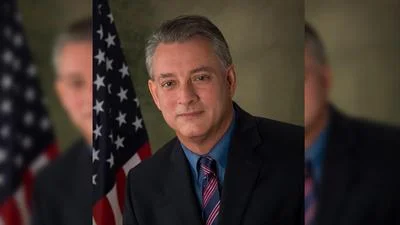WASHINGTON, D.C. - Ways and Means Social Security Subcommittee Chairman Earl Pomeroy (D-ND), issued the following statementtoday at a joint hearing with the Subcommittee on Income Security and Family Support on the Social Security Administration’s (SSA) Disability Claims Backlogs:
“This subcommittee has held a number of hearings on the backlogs in Social Security and Supplemental Security Income disability claims. We’ve heard compelling stories from people whose wait for a decision on their claim has cost them their home, their family, and more.
“Consistently, witnesses before the Subcommittee have stressed how important it is that the Social Security Administration (SSA) receive adequate, sustained funding to address these backlogs. The Commissioner of Social Security, who is with us here today, declared that eliminating the backlog is a “moral imperative." Members of this Subcommittee strongly agree.
“I have several goals in mind for today’s hearing:
“I want to acknowledge the progress that SSA has made with the increased funding Congress has provided since FY 2008. Congress’ investment in SSA is paying off. But SSA needs ongoing adequate funding to continue to make progress and not lose ground in reducing the backlog in appeals hearings, where a claimant appears before an Administrative Law Judge (ALJ). Since the beginning of 2009, the hearings backlog has begun to slowly decline, and is now down to 695,000 cases. For this initial success to continue, SSA must be funded at least at the level requested in the President’s Budget for Fiscal Year (FY) 2011.
“For millions of Americans who become disabled, the process of working through the multi-step appeals process can last an average of 777 days -- even with the reductions SSA has achieved. So we need to explore some concerns the Subcommittee has about how long it takes SSA to make a decision on a claim, and certain aspects of SSA’s plans to address the backlogs.
“SSA has said that, with the President’s FY 2011 request, the agency remains on track to eliminate the hearings backlog by the end of FY 2013. What we don’t know is what will happen after that point. Given the large influx of initial claims SSA is currently experiencing due to the recession, is SSA planning sufficiently for the years after 2013? Hard-won progress can be too easily be reversed. Moreover, some of SSA’s initiatives for reducing the hearings backlog have generated some concerns, which we will learn more about today.
“This hearing will also focus on the backlog of unprocessed new disability applications. Because of the recession and the aging of the baby boomers, new disability claims are expected to rise by nearly 29 percent from FY 2008 to 2010, and are not expected to drop significantly until after 2012. SSA projections show that more than one million people will be waiting for a decision on their initial disability claim by the end of FY 2010, and that the backlog will remain at essentially this level through FY 2011.
“When we look beyond this initial claims backlog and look at the total number of disability claims pending at any state of the process, nearly 2 million Americans are waiting for an answer from SSA.
“SSA described its strategy for addressing this initial determination backlog at our November hearing on this issue. I am interested in hearing about how that is working; how the recent spike in initial claims will impact the ALJ hearings backlog when these cases reach the hearing level in 2011 and later; and what more can be done.
“I am also concerned about the first appeals step - the “reconsideration" step, where the same office that rejected the initial application reviews it again. Fewer than 15 percent of applicants have an initial denial overturned at the reconsideration step, forcing most of them to appeal further and go before an ALJ. SSA does not publish data on the number of people waiting at this step, or how long it takes. This makes it hard for Congress to provide proper oversight of the disability process, when data and performance targets relating to reconsideration are not included in budget justification documents or performance plans.
“Moreover, there have long been concerns about the effectiveness of the reconsideration step. A number of efforts have been made over the years to find a better approach. This Subcommittee was very intrigued by the initiative launched by the previous SSA Commissioner to substantially improve the reconsideration step by replacing it with a Federal Reviewing Official. It is important that SSA analyze the strengths and weaknesses of that initiative, as well as alternatives. Also, I am not aware of any current effort by SSA to address the shortcomings of the reconsideration stage. That would seem an important thing to do, in my view.
“For these reasons, we want to ensure the Committee is fully informed about the implications of SSA’s announced plan to reinstate reconsideration in the ten states that don’t currently use it, starting with Michigan. One troubling impact I can see of reinstating reconsideration is that it will take longer for many applicants to get to the hearing level, since so few prevail at reconsideration. It may also discourage some people from pursuing their appeal rights. So far, SSA has been unable to provide the Committee with a cost-benefit analysis or a full evaluation of the impact of this plan on claimant waiting times over the next few years.
“Another issue I want to address was raised by my colleague, Representative Allyson Schwartz (D-PA), at the service delivery hearing we had two weeks ago. She described the delay some of her constituents are experiencing getting payments once a case has been allowed. I’m hoping Commissioner Astrue can tell us how long it takes to get these people paid what they are due after the ALJ has rendered a decision, and what the Agency is doing to address any delays.
“I recently had the pleasure of visiting some SSA offices in North Dakota. I was able to visit both the hearing office and several SSA field offices, and even met with state Disability Determination Service employees. I learned a lot on that trip. One of the things that became very clear is that SSA has many different types of claimants, and many different kinds of work that it does. The focus cannot just be on disability benefits, or just on retirement claims, or just on answering the phone. SSA cannot have the various populations it serves, or the work they need done, in separate silos. Therefore, I want to underscore the recommendation from the Government Accountability Office at our last hearing - that SSA needs a comprehensive service delivery plan, which covers all the types of work the agency is called upon to perform. Congress needs to know what SSA is facing in terms of keeping up with incoming claims, deciding appeals timely, and continuing to provide service to beneficiaries after they begin receiving benefits. We need to know what kinds of staffing and information technology the agency needs to effectively operate its programs and provide quality customer service.
“Finally, I want to thank my friend and colleague Sam Johnson, the Ranking Member of this Subcommittee, for his dedication to addressing the problems in processing disability cases. He is every bit as concerned as I am about the backlogs and I am grateful for the opportunity to work with him on a bipartisan basis to address these issues.
“I am a firm believer in the value of Social Security benefits, and I am committed to seeing that SSA continues to use the resources Congress gives it effectively and efficiently. That means not only recognizing the progress the Agency has made in keeping pace with growing workloads and addressing existing backlogs, but also scrutinizing areas where we have questions. My goal is to make sure SSA is doing everything it can with the resources we have provided, to make sure that Americans applying for disability benefits get an accurate decision in a timely manner."









